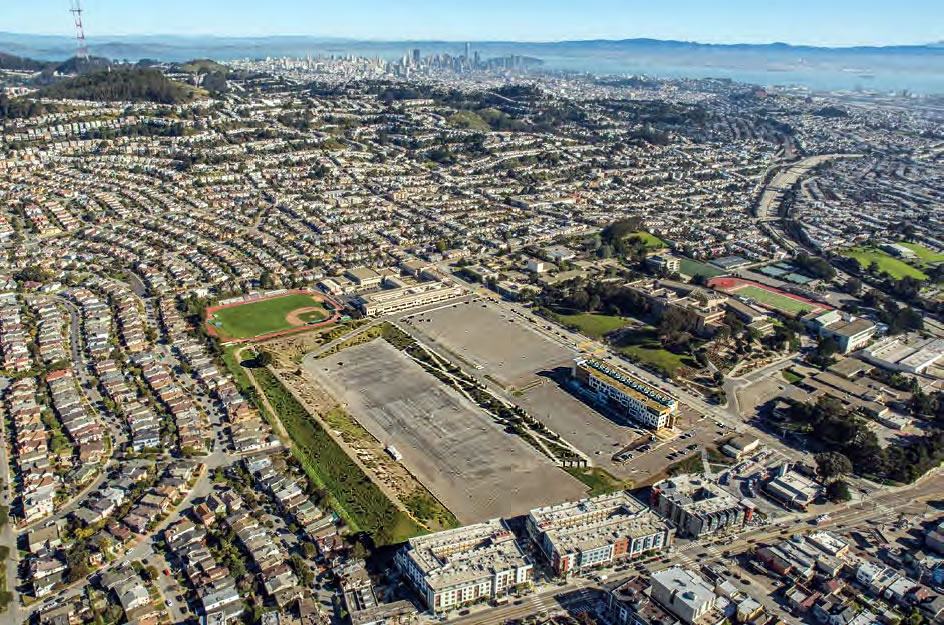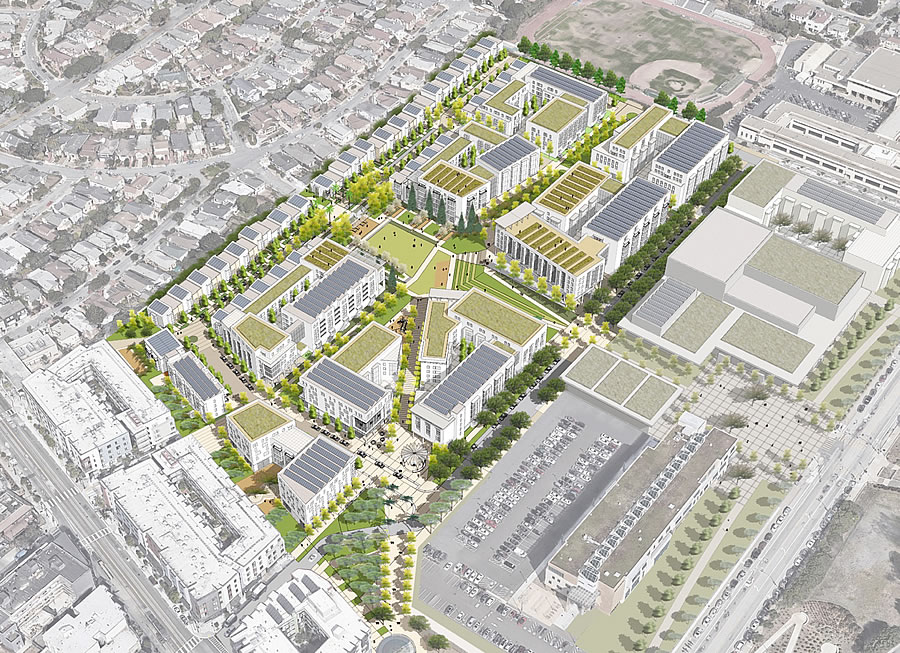As we outlined earlier this year, with the detailed Design Standards and Guidelines (DSG) document for the proposed redevelopment of San Francisco’s Balboa Reservoir having been drafted, the project team was positioning to secure approvals for the proposed 1,100-unit, 17-acre project in the second half of this year.
And as expected, despite some neighborhood pushback, San Francisco’s Board of Supervisors has now approved the project as proposed, with the project team having positioned for the ground to be broken next year, finishing the first phase of construction by 2025 and completing the development around 2027.
All that being said, keep in mind the timeline for the project was pre-COVID and dependent “upon financing and market conditions.” And of course, there could be a legal challenge (or two).
We’ll keep you posted and plugged-in.


About 700 sq ft of parcel area per unit is a lower density than most San Francisco neighborhoods where it’s 1 unit per 600 sq ft. It’s a shame to have that few units on a 17 acre site in such a transit rich location.
Maybe I have my math wrong but compared to current SF population density, this housing proposal will have a much higher density compared to SF as whole. 2019 estimate is 881,549 people live in SF with a land area of 46.91 sq. miles (1.31e9 sq ft). This is around 1 person per 1483 sq ft. For a 17 acre parcel (740,520 sq ft), only 500 people would need to live in that area to be at current city wide population density for SF and 1100 units are proposed to be built on the site.
But one has to take into account people aren’t spread out equally: just subtracting the Presidio (where few live) and other parks (where no one lives…in theory anyway!) would increase that density quite a bit. Also consider the (not inconsiderable) area taken up by streets, and the number changes quite a bit further…I’m guessing it changes to ~600sf.
They definitely went heavy on the integrated park / open space element, which is very pleasant. To counter that, I agree with you, the scale of buildings should have varied from say 3-12 stories with one larger tower, rather than the 1-7 stories we got. Not having a single building above 7 stories is a shame.
No. The sought-after walkable neighborhoods of the world (by residents and by tourists) mostly feature 5 to 7 story construction: central Paris, inner residential London, Hells Kitchen, Greenwich VIllage, DuPont Circle and Logan Circle, Back Bay, etc. etc. Tall towers can be intimidating and are not necessary for good, high-density and walkable neighborhoods.
“Some neighborhood pushback”, nice. This process started in 1981. We’ve been arguing over this for generations.
About average for this type of development in SF. 🙂
The Navy closed Hunters Point in 1976? I bet it still has another 30 years to go…
Will the City be running this? If so, it will be a disaster. Think the Fillmore Center which was sold to a private party less than 10 years after it was completed because of leaky ceilings and widespread mismanagement that left many areas as unlivable.
No.
What a lost opportunity to build near Bart and a school. History won’t be kind looking back at this. But as the author said, economic conditions have deteriorated and I doubt this project will get done on the 2025 timeline, if at all.
agree. this should have been at least 3x the number of units. very walkable to bart, next to college and a retail district nearby
I agree with the opinion that there should have been more in a location like this, but this is in line or better than most other TOD happening in the Bay Area right now. It’s very good and still could have been better.
Neither BART nor City College will likely be around in six months.
“Transit rich” area yet over 1000 parking spaces will be built. Looking at the rendering it doesn’t look like there will be a lot of street access to accommodate all these added cars. Ocean Ave. is already a mess and motorists play chicken on side streets given the narrow streets and parking on both sides.
For those pushing for 2 or 3 times the number of units you have to consider how much additional vehicle traffic will be clogging neighborhood streets.
Easy solution, stop inducing demand and reduce the ratio of parking to units built.
How about inducing demand to switch to transit? Maybe if the Bay Area had a much more robust and integrated transit network then more people would opt to use it and developers would include less parking.
I lived at Avalon Ocean Ave. and, fortunately, worked in the FiDi. BART was a clear winner for my commute. Muni was a crap shoot at best (anywhere from 35 – 75 min on the K/T). Had I worked on the peninsula or SV the transit option disappeared completely.
That’s a really out of date rendering of the development. The central park alignment has since been oriented North/South to be sheltered from the predominant onshore breeze.
Also, City College has significantly scaled back the size of its planned performing arts center and the rows of trees along Freida Kahlo in front of the Multi Use Building are fantasy – it is a parking lot and not related to the developer’s plans.
We discussed the need at the balboa park station CAC options and alternatives to directly link the development through joint efforts with CCSF on a “high-line” concept on CCSFs southern edge down to the tony Sacco entrance way and a revitalized balboa station masterplan with connective linkages across platforms to the K-M-J-T Which would serve better pedestrians an e-shuttle service running back and forth and bike path away from congested ocean ave… see the topography and the ability of CCSF to densify it’s eastern edge with housing above a parking structure and direct off-ramp into the school.
A high-line concept that made good use of the topography would be amazing.
In general, I’d love to see public projects that made better use of the city’s topography: for example, if a building next to a steep slope can integrate a large public elevator that’s easily accessible to cyclists and pedestrians, with entrances at the top and bottom, it would make bike commuting a lot easier for people who don’t want to tackle hills, without having to get relatively expensive e-bikes. I’ve seen similar in other countries. For example, the UCSF garage can connect Irving and Parnassus streets in this way.
By “public elevator” I assume you mean “scary semi-public pissoir, sexual commerce pad, and drug den”? Other countries are not the United States.
Sad but true. America is a squalid dump.